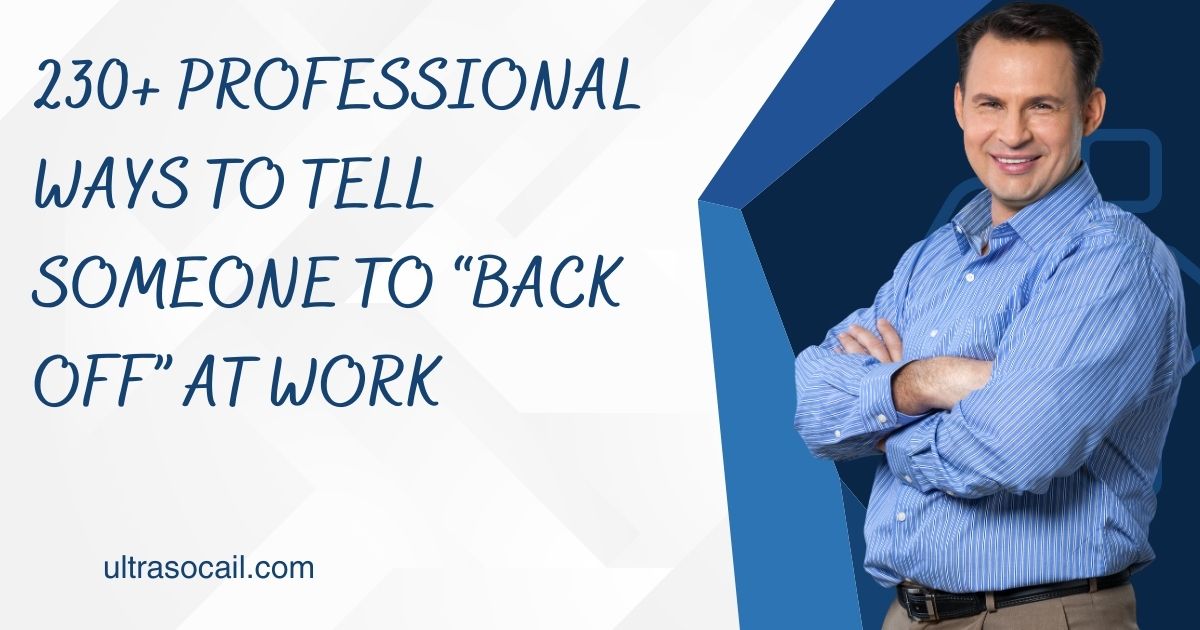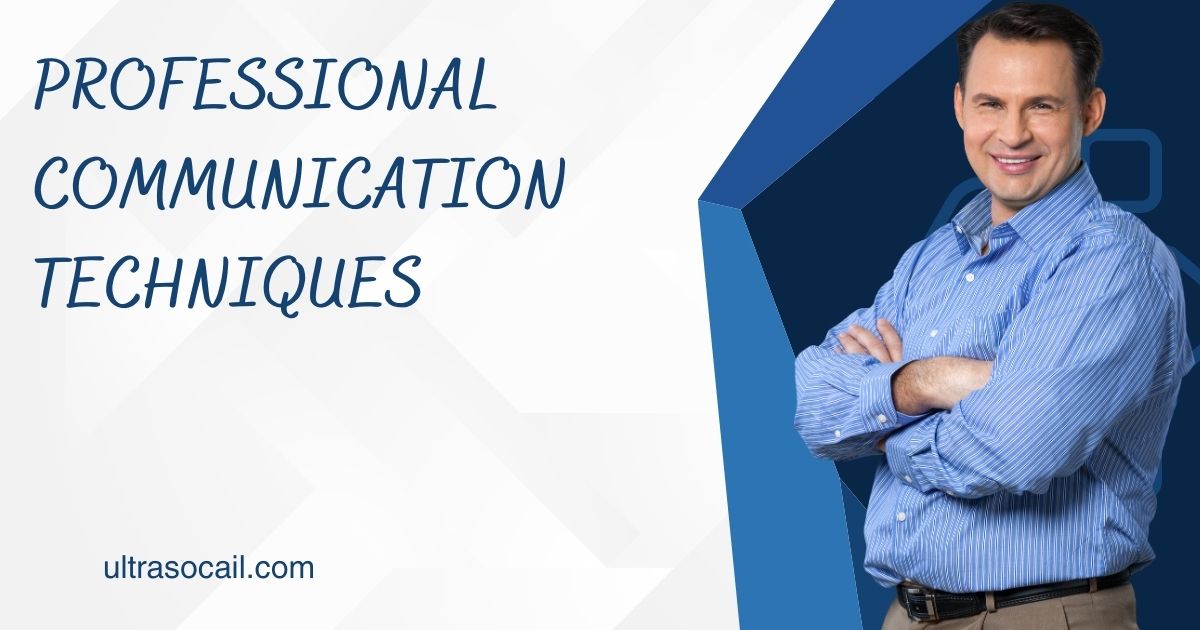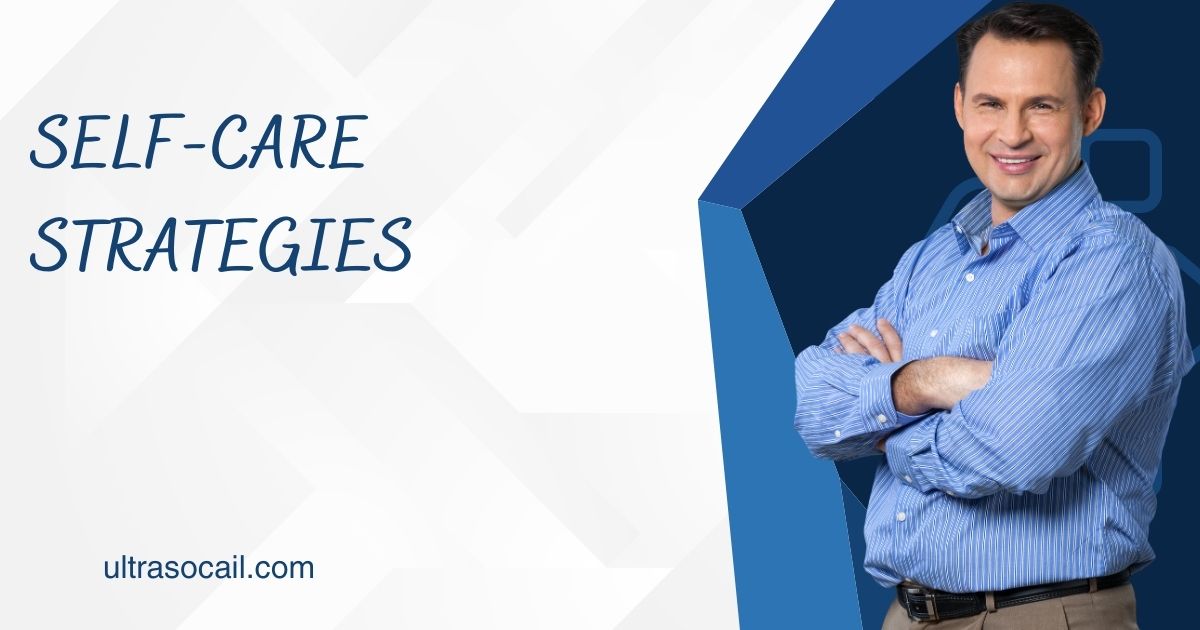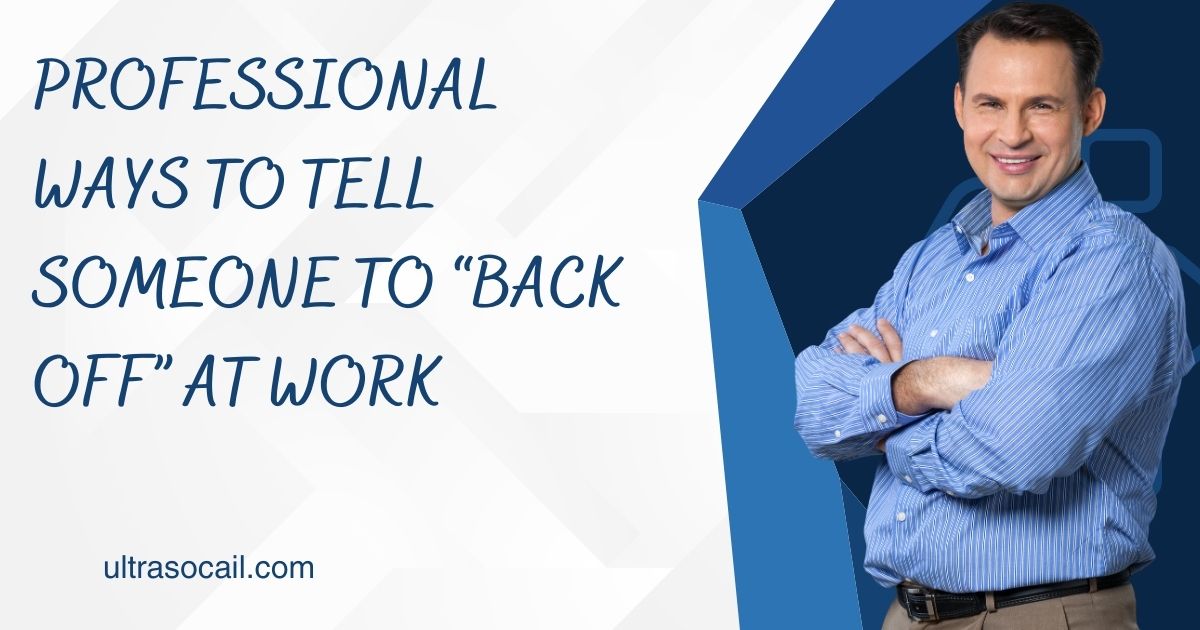Navigating workplace dynamics can feel like walking a tightrope. When a coworker crosses personal or professional boundaries whether it’s an overzealous team member, a relentless interrupter, or someone.
Who simply doesn’t respect your space it’s essential to know how to say “Back Off” without damaging relationships. Professionalism is key, and standing your ground doesn’t have to mean creating conflict.
In this collection of insightful quotes, you’ll discover powerful ways to communicate assertively while maintaining workplace etiquette.
Each quote serves as a reminder that setting boundaries and saying “Back Off” is not just acceptable; it’s crucial for fostering respect and professionalism in any work environment.
Dive into this comprehensive list to empower yourself and navigate workplace conflicts with confidence and grace.
Understanding the Context
Understanding the context in the workplace is crucial for effective communication. Each situation has its own dynamics, which can influence how you should respond.
When someone crosses a line, knowing the context helps you decide how to say “Back Off.” Is the person joking, or are they being intrusive? Recognizing these nuances allows you to choose your words wisely and assert your boundaries.
It’s also essential to consider your audience and the environment. Some colleagues appreciate a direct approach, while others may need a softer touch. Timing matters too; saying “Back Off” in a private setting often feels more respectful than doing it in front of others.
By grasping the context, you can handle conflicts gracefully, ensuring that your message is clear while maintaining professionalism and respect in your office relationships.
230+ Professional Ways to Tell Someone to “Back Off” at Work

In the workplace, maintaining professionalism is key, even when establishing personal boundaries.
This comprehensive list offers thoughtful and respectful phrases to help you assertively communicate your need for space while fostering a positive work environment.
Setting Professional Boundaries
- “A professional knows that respect is a two-way street; when someone crosses it, it’s time to draw the line.”
- “Establishing boundaries is not about shutting people out; it’s about creating a healthy work environment.”
- “In the world of work, clarity is power. Speak up when your boundaries are tested.”
- “Remember, your personal space is like a fortress; guard it with confidence.”
- “Professionalism starts with understanding where you stand; don’t hesitate to assert it.”
- “Boundaries aren’t walls; they’re simply guidelines for how you want to be treated.”
- “Communication is key; when boundaries are crossed, a respectful ‘back off’ can open the door to understanding.”
- “In a thriving workplace, everyone respects each other’s space and choices.”
- “Setting limits is an act of self-care; it enhances your work-life balance.”
- “An assertive response is often the first step toward a more respectful work relationship.”
Assertive Communication Techniques
- “Speaking your mind with respect can transform a tense situation into a constructive dialogue.”
- “To say ‘no’ is not an act of defiance; it’s a declaration of your professional values.”
- “Use ‘I’ statements to express your needs: ‘I need some space right now.’”
- “A calm voice conveys strength; assertiveness doesn’t have to be loud.”
- “Your tone sets the stage; choose words that reflect your intent while staying professional.”
- “Assertive communication is about clarity; never leave room for misunderstanding.”
- “When in doubt, remember: being direct is often the best way to convey your boundaries.”
- “A polite ‘back off’ can carry more weight than a harsh critique.”
- “Constructive feedback starts with understanding; approach with empathy and assertiveness.”
- “Professional assertiveness is a skill; practice it to build confidence in your workplace interactions.”
Handling Workplace Conflict
- “Every conflict is an opportunity for growth; handle it with grace and assertiveness.”
- “Addressing issues early can prevent bigger problems down the road; don’t shy away from tough conversations.”
- “Conflict resolution begins with respectful dialogue; never underestimate the power of a sincere conversation.”
- “In conflict, choose your battles wisely; some situations require a simple ‘back off.’”
- “Listen actively to understand the other person’s perspective; this is the first step in resolving conflicts.”
- “A respectful approach can turn workplace disagreements into collaborative solutions.”
- “When tensions rise, take a step back; sometimes, distance is the best way to regain clarity.”
- “Handling interruptions requires tact; a gentle reminder can go a long way.”
- “Use humor wisely; a light-hearted comment can defuse a tense situation.”
- “Respectful communication is the backbone of conflict management; it paves the way for solutions.”
Workplace Etiquette Tips
- “Etiquette is about respecting others’ boundaries; it fosters a positive work environment.”
- “The best workplace relationships are built on mutual respect and understanding.”
- “Politeness goes a long way; even when saying ‘back off,’ maintain your professionalism.”
- “A simple ‘please’ can soften your message while asserting your needs.”
- “Cultivating professional respect starts with acknowledging each other’s space.”
- “Workplace etiquette isn’t just about rules; it’s about fostering a culture of respect.”
- “Maintain focus at work by politely redirecting conversations that veer off course.”
- “Respect the personal boundaries of others as much as your own; it creates a harmonious workspace.”
- “Professionalism shines brightest when we honor the space of those around us.”
- “A workplace thrives on etiquette; it’s the glue that holds professional relationships together.”
Humor and Light-Heartedness
- “Sometimes, a little humor is the best way to say ‘back off’ without hard feelings.”
- “A light-hearted quip can express boundaries while keeping the mood light.”
- “Humor is a powerful tool; it can turn a tense ‘back off’ into a friendly suggestion.”
- “Next time someone intrudes, consider saying, ‘I’d love to chat, but I’m currently booked!’”
- “A witty remark can make your point without souring the atmosphere.”
- “Injecting humor into difficult conversations can create connection instead of conflict.”
- “Laughter diffuses tension; a well-timed joke can redirect the conversation to a more comfortable place.”
- “A humorous approach can transform an awkward moment into a memorable one.”
- “When all else fails, a cheeky grin and a ‘please back off’ can work wonders!”
- “Remember, laughter is a bridge; use it to connect while asserting your space.”
Personal Experiences and Reflections
- “From personal experience, I’ve learned that asserting boundaries often leads to healthier relationships.”
- “Every time I practiced saying ‘no,’ I felt my confidence grow.”
- “In my journey, I found that respecting my limits empowered my professional growth.”
- “Reflecting on my career, I realize that setting boundaries was key to my success.”
- “I’ve learned that saying ‘back off’ doesn’t mean closing doors; it opens the path to respect.”
- “In moments of conflict, I’ve found that calmness leads to clearer resolutions.”
- “When I embraced assertiveness, I noticed a significant shift in workplace dynamics.”
- “Through personal experiences, I’ve seen that respect begets respect in professional settings.”
- “The more I communicated my boundaries, the more my colleagues respected them.”
- “My professional journey taught me that clarity in communication is essential for success.”
Navigating Office Dynamics
- “Understanding office dynamics is crucial; it helps in navigating tricky situations effectively.”
- “Each workplace has its rhythm; finding your pace while asserting your boundaries is vital.”
- “In office relationships, mutual respect and understanding pave the way for collaboration.”
- “Navigating office politics requires finesse; assert your needs without stepping on toes.”
- “Every interaction shapes the work environment; choose your words carefully.”
- “When faced with interruptions, a firm ‘back off’ can signal your dedication to your work.”
- “Professional relationships thrive when boundaries are clear and respected.”
- “Navigating complex office dynamics requires emotional intelligence and assertiveness.”
- “In the maze of office politics, clarity and respect guide the way.”
- “Mastering workplace dynamics involves knowing when to speak up and when to listen.”
Building on the Theme
- “Professionalism is not just about work; it’s about how we treat each other.”
- “Respect is the cornerstone of every successful office relationship.”
- “Assertive communication is the key to preventing misunderstandings and maintaining boundaries.”
- “When you communicate effectively, you not only protect your space but also promote respect.”
- “In the workplace, your boundaries are as important as your tasks; prioritize them both.”
- “Managing interruptions effectively ensures a smoother workday for everyone.”
- “Every respectful ‘back off’ creates room for more meaningful interactions.”
- “Your voice matters; never underestimate the impact of assertive communication.”
- “A little kindness goes a long way in communicating your boundaries.”
- “Remember, a healthy work environment begins with you.”
Dealing with Difficult Coworkers
- “Navigating difficult personalities requires patience; a firm ‘back off’ can clarify your needs.”
- “When faced with challenging coworkers, assertiveness often diffuses tension.”
- “Your well-being comes first; don’t hesitate to say ‘no’ to unnecessary stress.”
- “Confronting difficult coworkers with respect can lead to unexpected solutions.”
- “Every tough conversation is an opportunity for growth; approach them with an open mind.”
- “Remember, handling difficult coworkers requires both empathy and assertiveness.”
- “A respectful ‘please back off’ can often turn hostility into cooperation.”
- “In every workplace, there’s a lesson to learn from dealing with challenging colleagues.”
- “Difficult coworkers can be a test of your professionalism; rise to the occasion.”
- “Handling tough personalities well can showcase your interpersonal skills in a professional setting.”
Communicating Effectively
- “Effective communication begins with clarity; be direct but respectful in your approach.”
- “To communicate effectively, listen more than you speak; understanding paves the way for respect.”
- “Words have power; choose them wisely when asserting your boundaries.”
- “In effective communication, less can be more; sometimes, a brief ‘back off’ suffices.”
- “Being straightforward fosters a culture of transparency and professionalism in the workplace.”
- “Your body language speaks volumes; pair your words with confidence.”
- “To be heard, you must also be clear; assertiveness without clarity can lead to confusion.”
- “Every conversation is a chance to reinforce your boundaries and professionalism.”
- “Communicate with purpose; each interaction can influence workplace dynamics.”
- “Effective communicators don’t just speak; they also listen and respond with empathy.”
Professional Respect
- “Respect in the workplace is earned through consistent communication and boundary-setting.”
- “When you respect others’ boundaries, you encourage a culture of mutual respect.”
- “Professional respect isn’t just about hierarchy; it’s about valuing each other’s contributions.”
- “A respectful workplace thrives on understanding, empathy, and clear communication.”
- “You demonstrate professionalism when you uphold your own boundaries while respecting others.”
- “Professional respect is a reciprocal relationship; give it to receive it.”
- “Every respectful interaction strengthens workplace culture; cultivate it daily.”
- “True professionalism encompasses the ability to disagree respectfully.”
- “In a respectful work environment, assertiveness is welcomed, not feared.”
- “Professional respect lays the foundation for effective teamwork and collaboration.”
Maintaining Focus at Work
- “Stay focused on your goals; a gentle ‘back off’ can help redirect distractions.”
- “In a busy workplace, maintaining focus requires setting clear boundaries.”
- “A calm work environment enhances productivity; assert your space to cultivate it.”
- “Sometimes, saying ‘no’ is essential for maintaining focus on your responsibilities.”
- “In the face of interruptions, prioritizing your tasks is a sign of professionalism.”
- “Your concentration is precious; protect it by establishing boundaries.”
- “A well-placed ‘please back off’ can help maintain focus during busy times.”
- “Distractions diminish productivity; keep your workspace clear of unnecessary interruptions.”
- “Maintaining focus at work starts with respectful communication of your limits.”
- “In the quest for productivity, assertiveness is your greatest ally.”
Stress Management at Work
- “Stress often stems from unmet boundaries; assertiveness is key to reducing it.”
- “Managing stress begins with saying ‘no’ when necessary; protect your mental health.”
- “A peaceful workspace is essential for stress management; communicate your needs clearly.”
- “Prioritize your well-being by respectfully asserting your boundaries.”
- “Stress is a sign that it’s time to reevaluate your workplace dynamics.”
- “Healthy communication reduces stress; assertiveness creates a more supportive work environment.”
- “In times of stress, remember to prioritize your personal space and limits.”
- “Managing stress effectively involves knowing when to say ‘back off.’”
- “A proactive approach to stress management includes setting clear expectations with colleagues.”
- “Your mental health matters; protect it by standing firm on your boundaries.”
Emotional Intelligence in the Workplace
- “Emotional intelligence enables you to read the room; use it to assert your needs.”
- “Understanding emotions helps in navigating workplace dynamics; be aware of your impact.”
- “With emotional intelligence, you can express boundaries without escalating tensions.”
- “An emotionally intelligent response can turn a conflict into a constructive dialogue.”
- “Recognizing the emotions of others helps in asserting your own needs effectively.”
- “Emotional intelligence is a powerful tool for maintaining professionalism and respect.”
- “By understanding emotions, you can create an environment where everyone feels valued.”
- “Emotional awareness fosters communication; assertive responses become more impactful.”
- “Incorporate empathy into your assertiveness; it enhances your professional relationships.”
- “Emotional intelligence is not just about understanding others; it’s about asserting your needs, too.”
Professional Relationships
- “Strong professional relationships are built on mutual respect and clear communication.”
- “In a collaborative environment, assertiveness fosters stronger relationships.”
- “Healthy professional relationships thrive when boundaries are respected and communicated.”
- “Invest in your relationships by establishing and maintaining clear boundaries.”
- “Communication is the lifeblood of professional relationships; be assertive yet kind.”
- “Every interaction shapes your professional image; choose assertive communication wisely.”
- “Healthy relationships at work begin with recognizing and respecting personal boundaries.”
- “When boundaries are respected, professional relationships flourish.”
- “A strong professional relationship is characterized by openness, respect, and effective communication.”
- “Navigating office relationships requires balance; assertiveness and empathy go hand in hand.”
Saying No Politely
- “Saying ‘no’ doesn’t have to be harsh; a polite approach can maintain relationships.”
- “To protect your time, sometimes a simple ‘no’ is the most effective response.”
- “Be clear but kind when saying ‘no’; it shows respect for both parties.”
- “Every ‘no’ is an opportunity to prioritize what truly matters to you.”
- “Polite assertiveness is a skill; practice it to enhance your professional communication.”
- “In a professional setting, a gentle ‘no’ can resonate louder than a forceful rejection.”
- “Communicating your limits respectfully is a mark of professionalism.”
- “When saying ‘no,’ frame it as a commitment to your responsibilities.”
- “A well-placed ‘no’ protects your time and energy; don’t hesitate to use it.”
- “Saying ‘no’ is not a failure; it’s an affirmation of your priorities.”
Cultivating a Positive Work Culture
- “A positive work culture thrives on respect, communication, and understanding.”
- “Assertiveness creates a ripple effect; when you stand up for yourself, others follow suit.”
- “In the realm of work, kindness is just as powerful as assertiveness.”
- “Every interaction is an opportunity to foster a positive workplace culture.”
- “Respect is the foundation of any thriving work culture; cultivate it daily.”
- “When employees feel respected, they perform better; assertiveness is key.”
- “Creating a positive workplace involves balancing assertiveness with empathy.”
- “Empowered employees contribute to a culture of professionalism and respect.”
- “In a healthy work environment, assertiveness is embraced, not feared.”
- “When assertiveness and respect go hand in hand, the workplace flourishes.”
Reflecting on Professional Growth
- “Every challenge at work is a stepping stone for personal growth; embrace assertiveness.”
- “Reflecting on experiences enhances your ability to communicate effectively in the future.”
- “Professional growth is a journey; learn from every situation to improve your assertiveness.”
- “By assessing past interactions, you can refine your approach to setting boundaries.”
- “Each experience shapes your professional identity; learn to articulate your boundaries.”
- “The path to professional growth begins with self-reflection and assertiveness.”
- “Embrace every challenge as a lesson in effective communication and boundary-setting.”
- “Your professional journey is enriched by the lessons learned from assertive interactions.”
- “Growth happens outside your comfort zone; practice assertiveness to expand it.”
- “Reflecting on your experiences equips you with the skills to navigate future challenges.”
The Importance of Work-Life Balance
- “Achieving work-life balance requires setting clear boundaries and prioritizing personal time.”
- “Respect your time outside of work; it’s essential for overall well-being.”
- “A healthy work-life balance begins with assertively communicating your limits.”
- “Protecting your personal time is crucial; assertiveness helps maintain balance.”
- “In the pursuit of work-life harmony, respect for personal time is non-negotiable.”
- “Establishing boundaries leads to a more satisfying and balanced professional life.”
- “Remember, your worth is not measured by your work; prioritize your life outside of it.”
- “A balanced life contributes to better productivity at work; assert your needs.”
- “Work-life balance is a right; advocate for it with confidence.”
- “Every time you assert your boundaries, you take a step toward a healthier work-life balance.”
Inspirational Quotes from Leaders
- “Great leaders communicate their vision with assertiveness; clarity inspires action.” John C. Maxwell
- “The art of communication is the language of leadership.” James Humes
- “Assertive leaders cultivate a culture of respect, trust, and collaboration.” John Kotter
- “Leaders are not afraid to say what they need; assertiveness is a sign of strength.” Brene Brown
- “Effective leadership hinges on the ability to communicate boundaries clearly.” Simon Sinek
- “When leaders assert their vision, they guide their teams toward success.” Patrick Lencioni
- “In leadership, assertiveness fosters transparency and accountability.” Jim Collins
- “Strong leaders respect boundaries; they know that teamwork flourishes within them.” Frances Hesselbein
- “True leadership is about empowering others while asserting your vision.” Margaret Thatcher
- “Assertive leaders inspire confidence; they create environments where people thrive.” Jack Welch
Encouragement for Personal Development
- “Personal development flourishes when you assertively pursue your goals.”
- “Each day is a chance to strengthen your assertiveness and build your self-confidence.”
- “Growth occurs when you step out of your comfort zone; practice assertiveness.”
- “Your journey toward personal development begins with clear intentions and assertive actions.”
- “Set boundaries that align with your personal values; it’s a vital aspect of growth.”
- “Embrace challenges as opportunities for development; assertiveness opens doors.”
- “Your growth is a reflection of your willingness to assert your needs and boundaries.”
- “Personal development is a continuous process; assertiveness fuels it.”
- “With each step taken assertively, you inch closer to your personal goals.”
- “Investing in yourself requires the courage to be assertive in your pursuits.”
Reflecting on Professional Experiences
- “Reflecting on your professional journey empowers you to communicate your needs effectively.”
- “Every experience, positive or negative, shapes your ability to assert yourself.”
- “Look back on your career; the lessons learned inform your assertive communication today.”
- “Growth stems from reflection; assertiveness becomes easier with practice.”
- “Use past experiences as stepping stones for future assertiveness.”
- “Every challenge faced adds to your arsenal of assertive responses.”
- “Reflect on your journey; it provides insight into your communication style.”
- “With every experience, you refine your assertiveness and improve your interactions.”
- “Your professional experiences are valuable; learn from them to assert yourself better.”
- “Every reflection is a chance to grow; assertiveness is a key part of that process.”
Strategies for Practicing Assertiveness
- “Practicing assertiveness requires deliberate strategies; start small and build confidence.”
- “Use role-playing scenarios to develop assertive communication skills in real situations.”
- “Reflect on your triggers and plan assertive responses ahead of time.”
- “Practice saying ‘no’ to low-priority requests to strengthen your assertiveness.”
- “Maintain eye contact and open body language to reinforce your assertive stance.”
- “Seek feedback from trusted colleagues to improve your assertiveness in communication.”
- “Journal your experiences; reflecting on interactions can enhance your assertive skills.”
- “Set specific goals for assertiveness in your professional life; track your progress.”
- “Mindfulness can help you stay calm and focused during assertive conversations.”
- “Engage in assertiveness training workshops for hands-on practice and support.”
The Impact of Assertiveness on Career Advancement
- “Assertiveness can be a catalyst for career growth; it opens up new opportunities.”
- “Professionals who communicate assertively are often perceived as leaders.”
- “Building a reputation for assertiveness can lead to increased responsibilities.”
- “Assertiveness enhances visibility in the workplace; it showcases your contributions.”
- “Advocating for your ideas and projects can significantly impact your career trajectory.”
- “Employers value assertive individuals; they contribute positively to team dynamics.”
- “Networking becomes more effective when you practice assertive communication.”
- “Assertiveness fosters trust and respect; essential qualities for career advancement.”
- “Your ability to express needs can lead to better job satisfaction and retention.”
- “Assertiveness paves the way for promotions; it’s a critical skill for leadership roles.”
Professional Communication Techniques

Effective professional communication techniques are vital in any workplace. Knowing how to assertively say “Back Off” can help you maintain boundaries. Use clear language to express your thoughts. Avoid ambiguity; be direct but respectful. This way, you promote understanding. Remember, saying “Back Off” doesn’t mean being rude. It’s about prioritizing professionalism while standing your ground.
Related Guide:
230+ Responses to “What’s Shakin Bacon?” | Finest Collection
Diplomatic Responses
When someone oversteps their boundaries, a diplomatic response is key. Saying “Back Off” can be done tactfully. Try phrases like, “I appreciate your enthusiasm, but I need some space.”
This approach shows respect for others while asserting your needs. It helps maintain harmony in the workplace. Using diplomacy allows you to communicate effectively without escalating tensions.
Non-verbal Communication
Non-verbal communication plays a significant role in workplace interactions. Your body language can express what words sometimes cannot. When someone invades your space, your posture can signal a need for distance.
Maintain eye contact to assert your message clearly. Use gestures to reinforce your point when you say “Back Off.” This combination of verbal and non-verbal cues strengthens your message.
Handling Persistent Behavior
Persistent behavior can be challenging to manage. If a coworker doesn’t respect your boundaries, it’s crucial to respond. Use assertive statements like, “I need you to Back Off.” Set clear limits and follow through.
If the behavior continues, don’t hesitate to escalate the issue to a supervisor. Addressing persistent issues early prevents further complications in workplace dynamics.
Seeking Resolution
Seeking resolution is essential when conflicts arise. If someone crosses the line, start a conversation. Express your feelings and say “Back Off” if necessary. Focus on finding common ground.
Use active listening to understand the other person’s perspective. By doing this, you create a collaborative environment. Resolving conflicts positively contributes to a healthier workplace.
Self-care Strategies

Taking care of yourself is vital in a demanding work environment. When dealing with difficult situations, practice self-care. Step away when you feel overwhelmed. A brief break can help you recharge.
Remember to say “Back Off” to any negativity that affects your well-being. Prioritizing your mental health allows you to handle workplace challenges with a clearer mindset.
FAQ’s
What does it mean to say “Back Off” in the workplace?
Saying “Back Off” in the workplace means asserting your boundaries and requesting someone to respect your personal space. It’s essential for maintaining professionalism and ensuring a healthy work environment.
How can I effectively tell a coworker to “Back Off”?
To effectively tell a coworker to “Back Off,” use clear and respectful language. You might say, “I need you to Back Off for a moment so I can focus on my tasks.”
Is it appropriate to say “Back Off” to my manager?
While it can be delicate, you can say “Back Off” to your manager if their behavior crosses professional boundaries. Approach the conversation with respect and focus on your need for personal space.
What are some polite alternatives to saying “Back Off”?
Polite alternatives to saying “Back Off” include phrases like, “Can we pause this discussion?” or “I need some time to think.” These options convey your message without sounding harsh.
How does saying “Back Off” contribute to a healthy work environment?
Saying “Back Off” contributes to a healthy work environment by promoting clear communication and respect. Establishing boundaries helps reduce conflicts and fosters positive workplace relationships.
Conclusion
In conclusion, knowing how to say “Back Off” in the workplace is crucial for maintaining your professional boundaries. As we’ve explored, effective communication techniques, diplomatic responses, and non-verbal cues all play a significant role in asserting yourself. When someone doesn’t respect your space, it’s important to respond confidently and clearly. Remember, saying “Back Off” doesn’t have to create conflict; it can foster understanding and respect.
Moreover, handling persistent behavior requires proactive measures. By addressing issues early on and seeking resolution, you can create a healthier work environment. Prioritizing self-care strategies also empowers you to manage stress effectively. Ultimately, asserting your needs is essential for personal and professional growth. So, the next time someone crosses the line, don’t hesitate to say “Back Off.” Embrace assertiveness, protect your boundaries, and cultivate a workplace culture where respect thrives.
Related Guide:
200 Motivational Messages for a “Hardworking Boyfriend”
200+ Best Replies to “What’s Good?” – (WSG)
200+ Replies to “Congratulations” Messages
When someone asks “How Is Your Day Going?” : 200+ Replies

As a seasoned content writer with five years of experience, I specialize in crafting engaging and SEO-friendly website content that resonates with audiences. My passion lies in transforming complex ideas into clear, compelling narratives that drive traffic and conversions. With a keen eye for detail and a deep understanding of digital marketing, I help brands tell their stories effectively. Whether it’s blog posts, web copy, or social media content, I strive to deliver quality that captivates readers and enhances online presence.




![195 Short Prayers For [Safe Travel] & [Protection] For All Prayers For [Safe Travel] & [Protection] For All](https://ultrasocail.com/wp-content/uploads/2025/02/Prayers-For-Safe-Travel-Protection-For-All-300x158.jpg)


